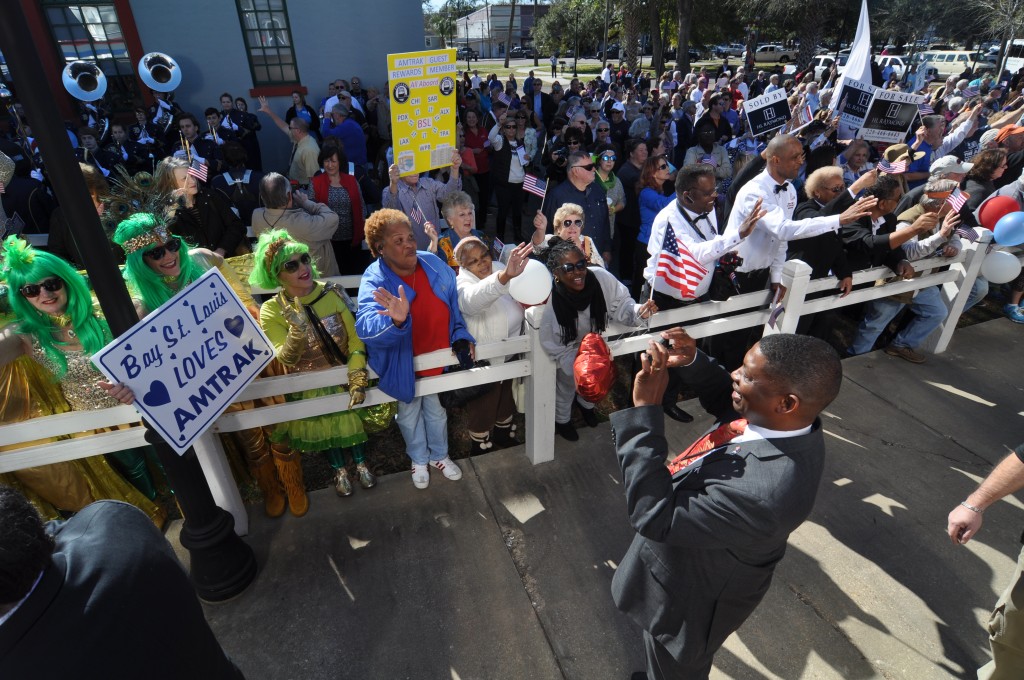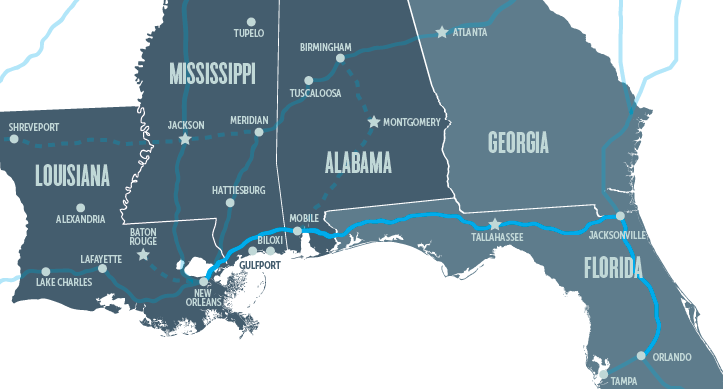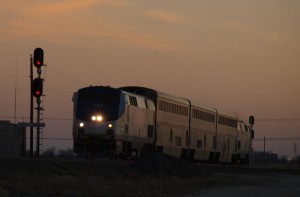
At long last, the City of Mobile, AL approved a resolution that brings passenger rail to New Orleans closer to fruition. The timing is fitting: February marked the fourth anniversary of the first passenger train to roll through the Gulf Coast since Hurricane Katrina. That was just a one-time ride, but not for much longer: In 2022, there will be four trains a day.
This February, the City of Mobile, AL took a bold step toward restoring passenger rail service to New Orleans: the city approved the funding necessary to apply for a $8 million grant from Federal Railroad Administration’s Restoration and Enhancement (R&E) program. If the FRA awards this grant, the funding approved by Mobile will be combined with existing funding from Mississippi, Louisiana, and a previous R&E grant to provide operating support for the first three years of restored rail service.
By a 6-1 city council vote in favor of funding, the City of Mobile demonstrated it understands the tremendous economic and mobility opportunity this passenger rail service represents. This is one of the final pieces of funding necessary to restore service, and we at T4America are thrilled to see the City of Mobile take this action.
But none of this was imaginable four years ago. In February 2016, an Amtrak train left New Orleans and headed east towards Bay St. Louis, a beautiful town on the Mississippi coast, for the first time since Hurricane Katrina.
Eleven years earlier, Katrina devastated many cities and towns along the Gulf Coast. By 2016, freight rail had been restored for almost a decade, but not the Amtrak service that ran between New Orleans and Mobile. Bringing the service back after so long took some convincing: the FRA conducted a feasibility study, and the Southern Rail Commission, the University of Southern Mississippi, and the University of Alabama conducted fiscal analyses that showed the potential impact of bringing the train back. The University of Southern Mississippi study even found that for every dollar invested in restoring passenger service, $15 to $20 would be generated in the regional economy.
These detailed studies undoubtedly played a huge role in winning a $33 million grant from the FRA to bring back passenger rail to the Gulf Coast. But sometimes, people have to see something in action to believe that it will work. That’s where the inspection train came in.
Amtrak, in partnership with freight rail operator CSX and the Southern Rail Commission, ran a train full of elected, civic and other local leaders from the Gulf Coast and beyond from New Orleans to Jacksonville, FL to assess the feasibility of restoring passenger service, as well as the popularity of such a route. And the popularity was astounding.
“I was on that train, and I will never forget the moment we rolled into Bay St. Louis for the first stop after departing New Orleans,” T4America’s communications director, Steve Davis, later wrote. “Conversations halted immediately as we were taken aback by the overwhelming sights and sounds of Bay St. Louis. Schools were closed, bands were playing, costumes were donned, and it seemed like the entire city had turned out to see the first passenger train in 11 years.”
The people of Bay St. Louis are a little excited about getting passenger rail service back. #YallAboard pic.twitter.com/OsRUkIZv6P
— Transportation for America (@T4America) February 18, 2016
It wasn’t just Bay St. Louis. At every station between New Orleans and Jacksonville, the train was greeted by thousands of cheering supporters. Administrator Sara Feinberg of the FRA was clearly taken aback as she stepped off the train, shaking hands with excited residents lining the train platform and pulling out her phone to take pictures of her own. Louisiana Department of Transportation and Development Secretary Shawn Wilson posed for pictures with smiling and yelling residents like he was a rock star.
“I knew there was pent up enthusiasm for passenger rail, but I think all of us were astonished by the size of the crowds,” said John Robert Smith, the chair of T4America and a former Mississippi mayor. “The crowds were so diverse: old, young, all ethnicities, and all economic abilities. Everyone on that train walked away with the sense that this passenger service will not only work but thrive, because it links two big cities with the smaller, equally important cities on the Gulf.”
Four years later, that inspection train wasn’t just a test: it was a taste of what’s to come. Mississippi Republican Senator Roger Wicker led the creation of two important rail grant programs—the Consolidated Rail Infrastructure and Safety Improvements (CRISI) and the R&E grant that Mobile just applied for. The Southern Rail Commission won grants from both programs in 2019 to bring back Gulf Coast passenger rail, but they also needed commitments from the states and cities involved, like Mobile, to make it happen.
Mississippi, Louisiana, and now Alabama have followed suit, with the City of Mobile committing $3 million, Mississippi matching the federal grants, and Louisiana providing priority funds. Amtrak estimates that service will be restored in two years, running four trains every day between New Orleans and Mobile.
“Think about what this means for Mobile,” said Smith of Mobile’s recent commitment to restoring passenger rail. “The Gulf Coast is celebrating Mardi Gras right now. New Orleans gets most of the attention, but Mobile hosts a huge Mardi Gras celebration too. With passenger rail, the thousands of tourists to New Orleans can visit Mobile’s Mardi Gras celebration.”
At T4America, we’re still thrilled that the inspection train—and all of the hard work from advocates, community members, business leaders, and elected and government officials—led to something permanent. And we hope that other regions of the country can do the same.






